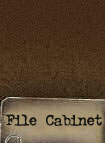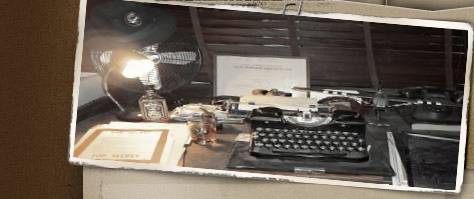
Battle Relic: Odyssey of a Nazi
tractor; "schwerer
Wehrmachtschlepper" (Heavy Military Tractor) in Liberty
Park Museum
Introduction: We are
becoming regular visitors of the
excellent Liberty Park Museum in
Overloon, The Netherlands.
The museum has an enormous
collection of armored and soft skin
vehicles and weaponry of the World
War Two era and the subsequent Cold
War years.
When we were there on December 11th 2011,
we noticed a new German World War
Two item on display; a so called "schwerer
Wehrmachtschlepper" abbreviated sWS,
(Heavy Military Tractor). |
.jpg) |
|
The track is
to be
tightened,
so that the upper track band
rests on the center sprockets,
but does not touch
the first sprocket ! |
|
(click for an
enlargement) |
|
.jpg) |
An sWS is a half-track flat-bed
cargo vehicle used as supply vehicle
and as a tractor to haul cargo and
equipment in the last three years of
World War Two.
In 1942 the Fuehrer himself had
ordered the development of a simple,
low-speed, half-track, load-carrying
vehicle for use on the Eastern
Front.
The German company Büssing-NAG was
granted the contract to develop a
new 5 ton tractor to replace the
earlier types of half tracked
vehicles in use with the German
Wehrmacht.
This became the sWS. |
|
(click to enlarge) |
|

_small.jpg)
_small.jpg)
_small.jpg)

Left hand side view |
|
(click to enlarge) |
|
_small.jpg)

_small.jpg)
_small.jpg)

Right hand side view |
|
Photographic evidence shows that the
sWS saw action in Western Europe
too, where it had been no match
against advancing American troops. |
|
(click to enlarge) |
|
.jpg)
.jpg) |
Noteworthy on this particular
vehicle were not only the khaki
paint job and markings for an
armored infantry platoon of the
12th SS Panzer (armored) Division
"Hitlerjugend"
(Hitler
Youth).
|
|
.jpg) |
.jpg) |
.jpg) |
No, what struck us most were the
apparent matter-of-fact descriptions
on the shipping tags still on the
vehicle.
These labels neither explain museum
visitors of the history and
characteristics of the item on
display, nor what an sWS is, but
boldly state that we are dealing
with a "1 of 1 WWII Army 1/2 Track"
and a "Military Half – Track
Machine".
|
|
(click to enlarge) |
|
_small.jpg) |
_small.jpg) |
_small.jpg) |
|
When we were in the museum again on
the 29th of February 2012, the sWS
stood in the same spot, with the
windshields up and a canvas top on
the bed; but still with the shipment
tags on them. |
Research
The museum guide on duty could not
tell us much more about the vehicle.
We decided to research the history
of this vehicle.
Of course there is no Nazi Motor
Vehicle Database where one can
enter the plate number "SS 402038"
and make a print out of the vehicle
history, VIN number and previous
ownership titles.
(Let alone of outstanding
warrants...)
Nonetheless we were able to learn
more about the post-war whereabouts
of this sWS.
From the website of Dutchman Mr.
Piet van Hees, we learned that
this specific sWS did hard labor in
a French gravel yard, before it was
bought by the owners of the Belgian
Victory Memorial Museum in the town
of Arlon.
There it was restored and a new body
was constructed for this sWS.
Arlon, most likely, was also where
it got his 12th SS Division
markings. |
Victory Memorial Museum in Arlon,
Belgium
The Victory Memorial Museum in its
prime-time housed over 140 military
vehicles, 50 motorcycles and 279
uniforms from 11 different nations.
Unfortunately, location and economy
took its toll and the museum had to
close in the late 1990’s.
WWII Victory Museum in Auburn,
Indiana
In 2000, Indiana State Senator Dean
V. Kruse purchased the entire
collection from the museum in Arlon
and in early 2003 opened the WWII
Victory Museum which housed, among
many other items, the collection
from the closed Belgian museum. |
Liberty Park Museum in Overloon,
The Netherlands
From the
website of the Liberty Park Museum
we learned this:
|
"News: On
special Loan
November 4th, 2011 - On top op the
already formidable collection of the
Marshall Museum [another example
of a huge WWII vehicle collection
purchased by a museum] we have
recently received two additional
vehicles. A so-called sWS, which
stands for schwere
Wehrmachtschlepper, and an SAS-jeep.
The owners of both vehicles wished
to put their vehicles on display for
a large audience. For the sWS this
will be a temporary matter, because
it is expected that the owner will
start its restoration in the course
of 2012. Until that time it can bee
seen in our museum. [...]"
|
Piet van Hees
Vehicle enthusiast Piet van Hees
wrote us about the "schwerer
Wehrmachtschlepper":
The German company Büssing-Mag, like
many other automotive enterprises at
the time, found itself torn between
conflicting interests.
At one hand they sought to remain in
existence or even expand, but they
otherwise understood bloody well
that Hitler was out of his mind and
that the war was developing in favor
of the opposite side.
The question is if they have really
put effort in acquiring new orders.
I think that they were feeling the
hot breath of the regime in their
necks emphasizing them to make
maximal use of their production
capacity.
[German designer of Blitzkrieg
warfare; general Heinz Wilhelm] Guderian himself
was hard-pressed on continuation of
the production of the SdKfz 251
vehicle in stead of all the many
other new ideas.
The sWS would have been a proper
replacement for the 5 ton vehicle
(also produced by Büssing-Nag) but
it definitely required a bigger
engine.
And these were not available at the
time.
In the sense of technical
development, these were good ideas
but they came too late.
The extreme luxury and detailed
finishes of the pre-war models had
been contributing factors as well as
the sheer number of wild ideas. |
Vehicle archeology
Piet van Hees went on to tell us
that he had not only seen the
vehicle in the Liberty Park Museum,
but had been "underneath it" as
well.
Piet has examined the sWS in a
manner he describes as "vehicle
archeology".
The sWS in Overloon consists for
only a limited percentage of
authentic parts of 1944-'45 vintage.
The current owner of this sWS is a
private person of considerable
wealth who has bought three sWS's
from America.
An armored version of the sWS is
said to come to Overloon for a while
as well.
|
| We can only advise
our viewers to go see this
Battle Relic while it is still
on display in the
Liberty Park Museum; which is
worth a visit anytime. |
|
Back to Battlerelics
 |













